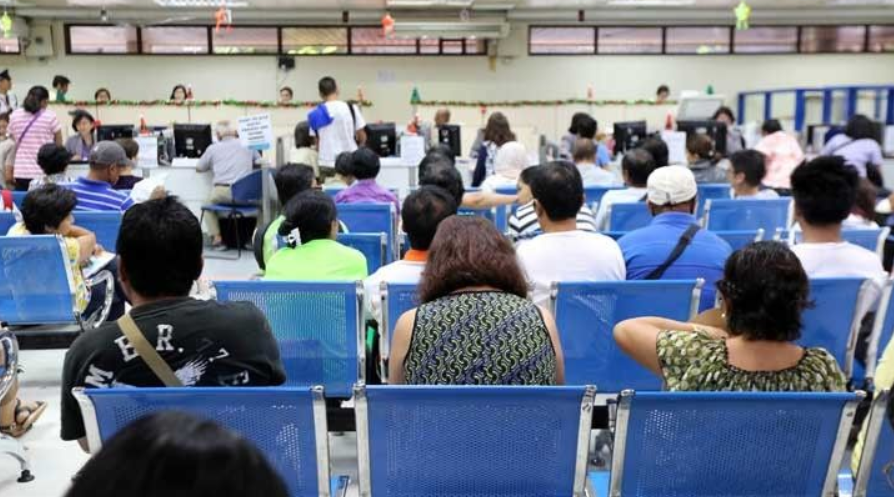For 2025, the Social Security System (SSS) has made some changes. Some are good, some might pinch your wallet a bit now, but all of them aim to make retirement more secure in the long run.
Let’s break it down in the simplest way possible, no technical talk, just straight-up answers to the things you really want to know.
Why Should You Care About the SSS Pension?
The truth is, not everyone in the Philippines gets to retire with millions in the bank. For most of us, the SSS pension is the fallback plan—the money you’ll rely on when you’re no longer working.
It’s not meant to make you rich, but it’s there to make sure you don’t go hungry or end up depending completely on your kids when you’re old.
That’s why knowing the new SSS rules for 2025 is super important.

What’s New With the SSS in 2025?
Let’s go over the real changes that affect your pocket and your future.
1. Contribution Rate Goes Up to 15%
Yes, you read that right. Starting this year, the contribution rate has increased from 14% to 15% of your salary.
Who pays this?
-
If you’re employed: Don’t panic—you won’t pay the whole 15%. Your boss still shares the cost. You pay part, they pay part.
-
If you’re self-employed, an OFW, or a voluntary member: Sorry to say, but you’ll have to pay the entire 15% on your own.
It might sting now, but remember—this higher contribution means you’re building a bigger retirement fund for yourself.
2. New Salary Credit Bracket
The Monthly Salary Credit (MSC) is basically the SSS’s way of calculating how much you’ll pay and how much you’ll eventually receive.
For 2025, here’s the updated range:
-
Minimum MSC: ₱5,000
-
Maximum MSC: ₱35,000
So if you’re earning more than ₱35,000 a month, you’ll still only contribute based on ₱35,000.
3. Pension Computation Stays the Same (But the Result Is Better)
The formula for computing pensions hasn’t changed, but since you’re paying higher contributions now, your future pension will be higher compared to what you would’ve gotten in previous years.
How does it work?
Here’s a basic idea:
Let’s say you’re paying for 30 years, and your average salary credit is ₱20,000.
-
Base calculation: ₱300 + 20% of ₱20,000 = ₱4,300
-
Additional: For every year beyond 10 years, you get 2% more. So if you’ve worked 30 years, that’s 20 years × 2% = 40%. That’s 40% of ₱20,000 = ₱8,000
-
Government bonus: Add ₱1,000 (this is the extra monthly benefit added a few years back)
Your total monthly pension could be around ₱13,300.
That’s not bad, especially if you combine it with personal savings or investments.
4. Most SSS Transactions Are Now Online
Let’s be honest—lining up at SSS branches is stressful. Good news: In 2025, most services can now be done online.
Here’s what you can do online now:
-
Apply for retirement or disability
-
Check your contribution records
-
Update your personal information
-
File claims or loans
-
Book appointments (if you still need to visit)
No need to take a whole day off work just to get things done. Just use the My.SSS Portal or download the SSS Mobile App.
5. Retirement Age Remains the Same
Some people were worried about this, but no—it hasn’t changed.
-
60 years old – Optional retirement if you stop working
-
65 years old – Mandatory retirement whether you stop working or not
If you work until 65, your pension might be higher because of the extra contributions.
6. Disability and Death Benefits Adjusted
If you become permanently disabled or pass away, the SSS will pay either:
-
A monthly pension
-
Or a lump sum payout, if you didn’t meet the minimum number of contribution years
For 2025, these amounts have been increased slightly to keep up with inflation. It won’t make anyone rich, but at least your family will get a little more support compared to before.
7. Annual Confirmation of Pensioners (ACOP) Now Online
If you’re already retired and receiving a pension, you still need to do the ACOP (Annual Confirmation of Pensioners).
But here’s the good news: You can now do this online. No more hassle of visiting the branch in person—especially helpful for senior citizens who don’t like commuting or waiting in line.
Why Are These Changes Happening?
Simple reason: SSS wants to keep the fund alive for everyone.
With people living longer and the cost of living going up, they need to adjust the system so that there’s still money left for future retirees.
At the same time, moving everything online helps make the process easier for members like you. Less paperwork, fewer lines, more convenience.
Frequently Asked Questions
Will my pension increase right away?
If you’re already retired, no, the new rates won’t affect you. But for people still paying now, it means a higher pension when it’s your turn to retire.
What if I’m an OFW? Can I still pay?
Yes! OFWs can pay through partner banks, remittance centers, or the SSS mobile app. It’s better to keep contributing if you want a pension later.
What happens if I miss payments?
If you’re self-employed or voluntary and miss payments, you won’t get penalized, but you’ll lose the months you skipped. That means less pension later.
Do freelancers or small business owners need to pay SSS?
It’s voluntary, but smart freelancers continue paying. Why? Because there’s no other pension system that’s as affordable and accessible as SSS for self-employed Pinoys.
